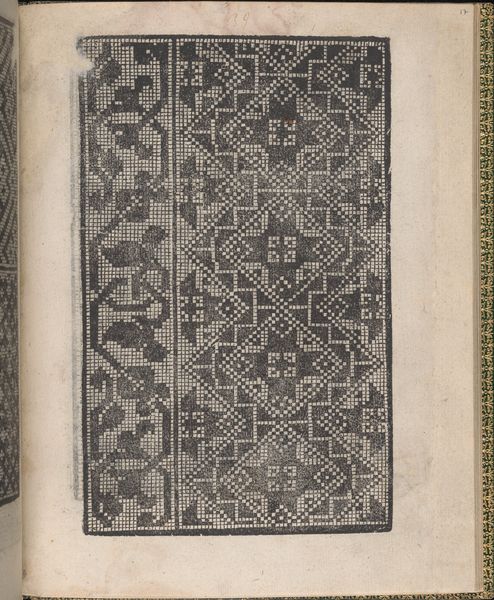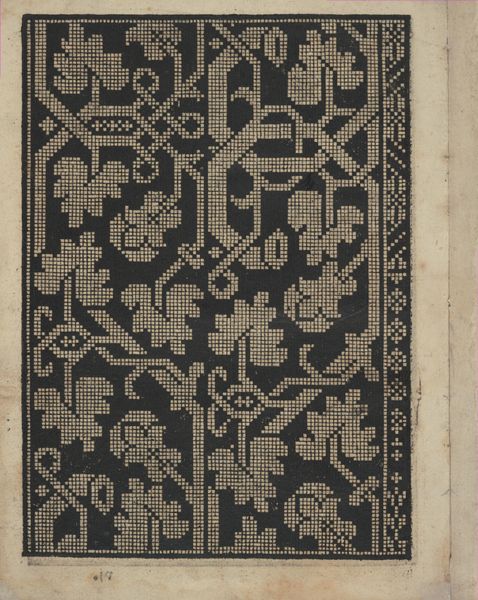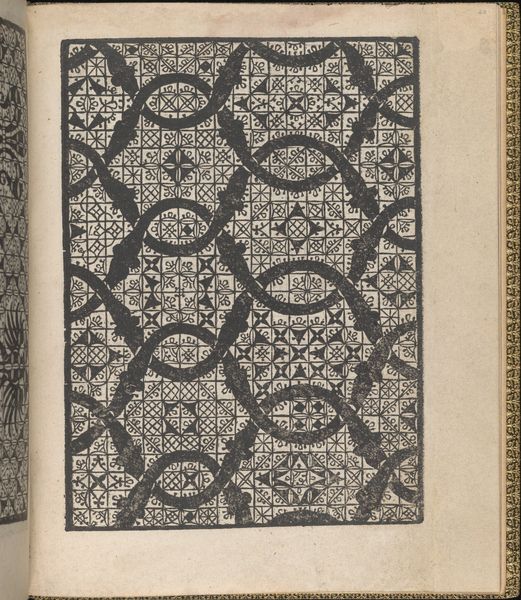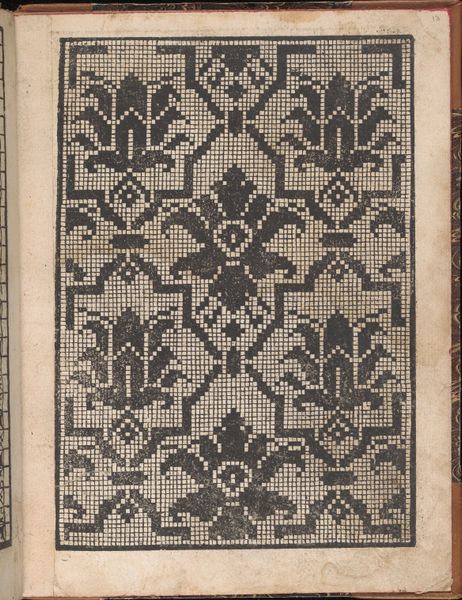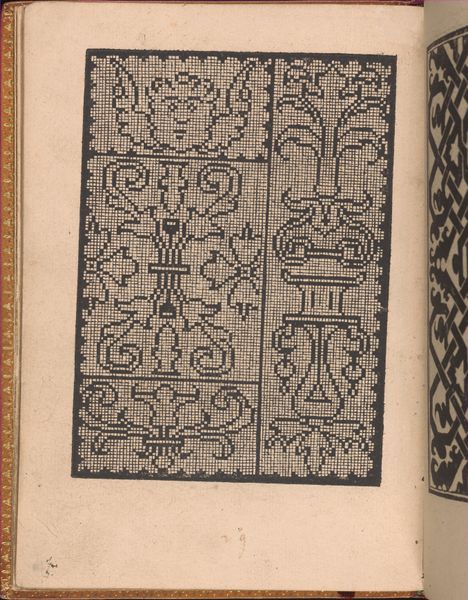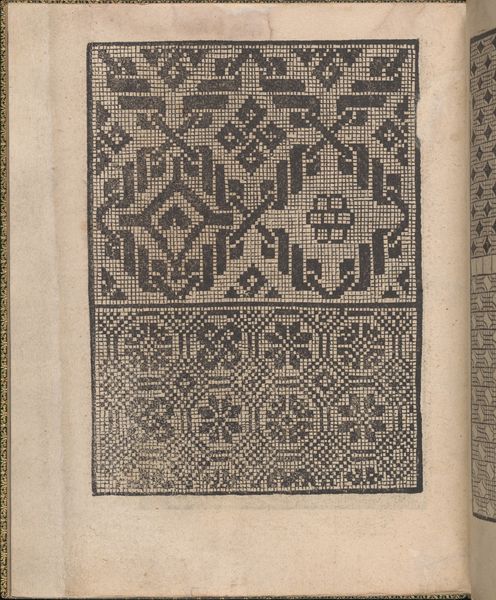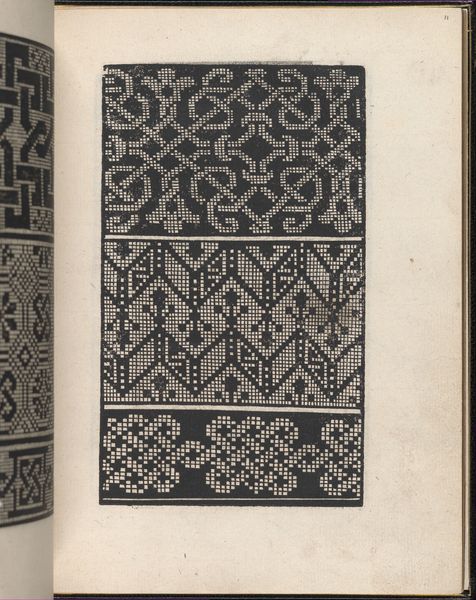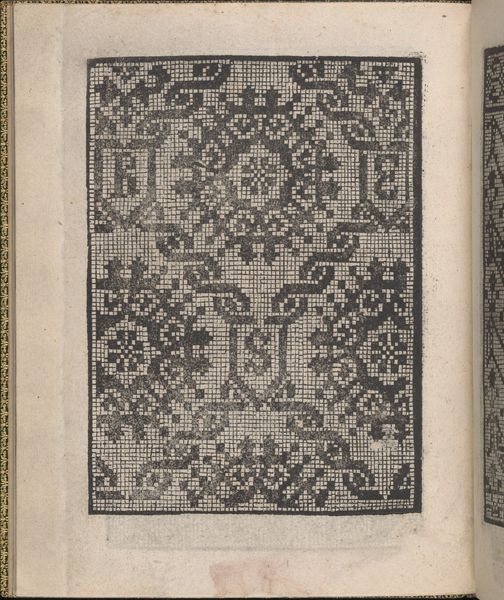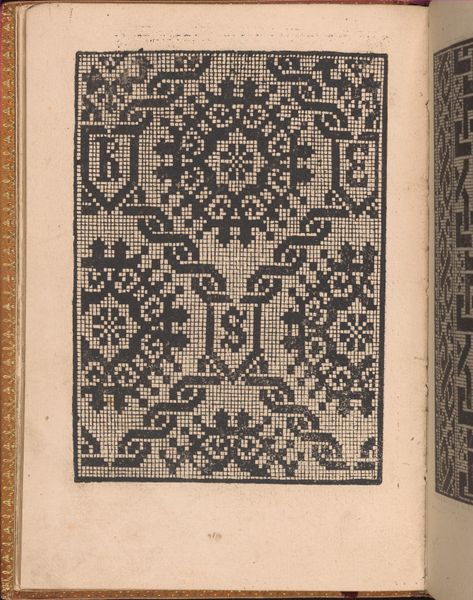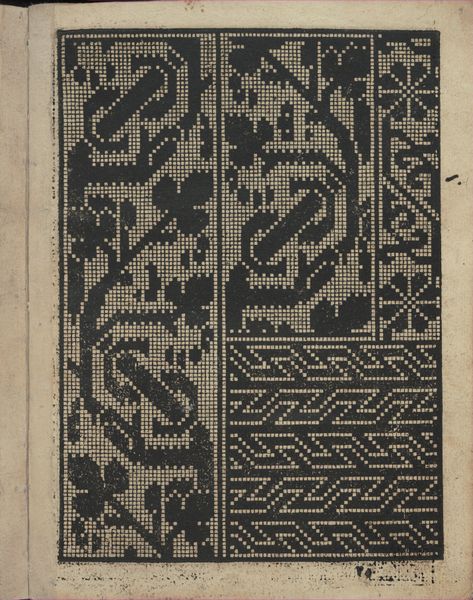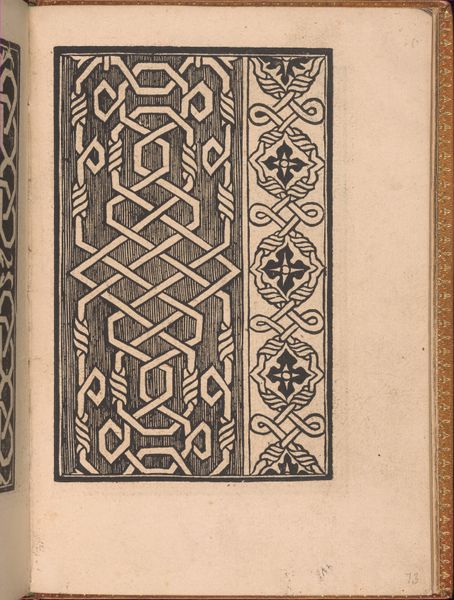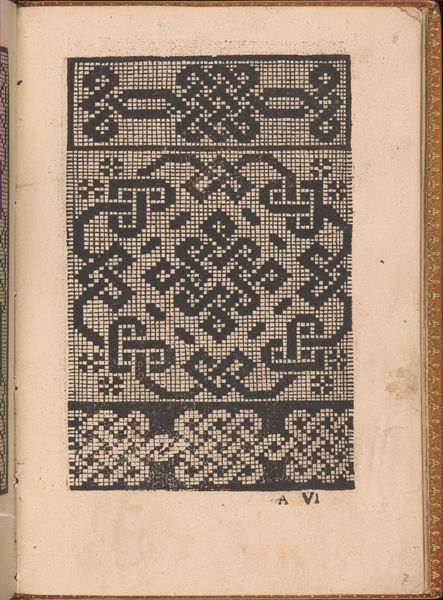
drawing, print, intaglio, paper, woodcut
#
drawing
# print
#
book
#
intaglio
#
paper
#
11_renaissance
#
geometric
#
woodcut
Dimensions: Overall: 7 7/8 x 5 1/2 in. (20 x 14 cm)
Copyright: Public Domain
Editor: So, here we have "Convivio delle Belle Donne, page 17" created around 1532 by Nicolò Zoppino. It's a print in a book – woodcut and intaglio on paper. The geometric pattern is really striking. It almost looks like a textile design. What draws your eye when you look at it? Curator: Well, immediately I think about the labor involved in producing this. This wasn't just a decorative element; it was functional. Each precisely carved line and dot of the woodcut and intaglio served a purpose within the textile production of the era. Consider the maker – Zoppino. How did he learn his trade? Where did he source his wood and paper? What social class did he serve with such painstaking craft? Editor: So you're seeing this as a record of production techniques and its economic context. I guess I hadn't really thought about the materials themselves as part of the story. The geometric quality, the paper, almost distracts. Curator: Exactly! The 'high art' association of "geometric pattern" can obfuscate how these prints were tools. Someone, likely a woman, used this pattern, this commodity, to produce tangible objects. They would then also enter circulation as commodities themselves. This image speaks to the interconnectedness of labor, materials, and consumption in Renaissance society. What sort of tools and physical effort do you imagine this print being linked to? Editor: Hmm, so things like looms and needles perhaps. The print providing the design that becomes translated to embroidery or lace… it becomes clear there are unseen craftspeople essential to this image’s wider role. Curator: Precisely! It makes you consider what the status of labour in craft and applied design has, relative to that of artists, then and now. Editor: It definitely gives me a lot to think about regarding the artistic and material processes at play. Thanks for shifting my perspective. Curator: My pleasure. Considering art from a materialist lens can truly enrich our understanding.
Comments
No comments
Be the first to comment and join the conversation on the ultimate creative platform.
